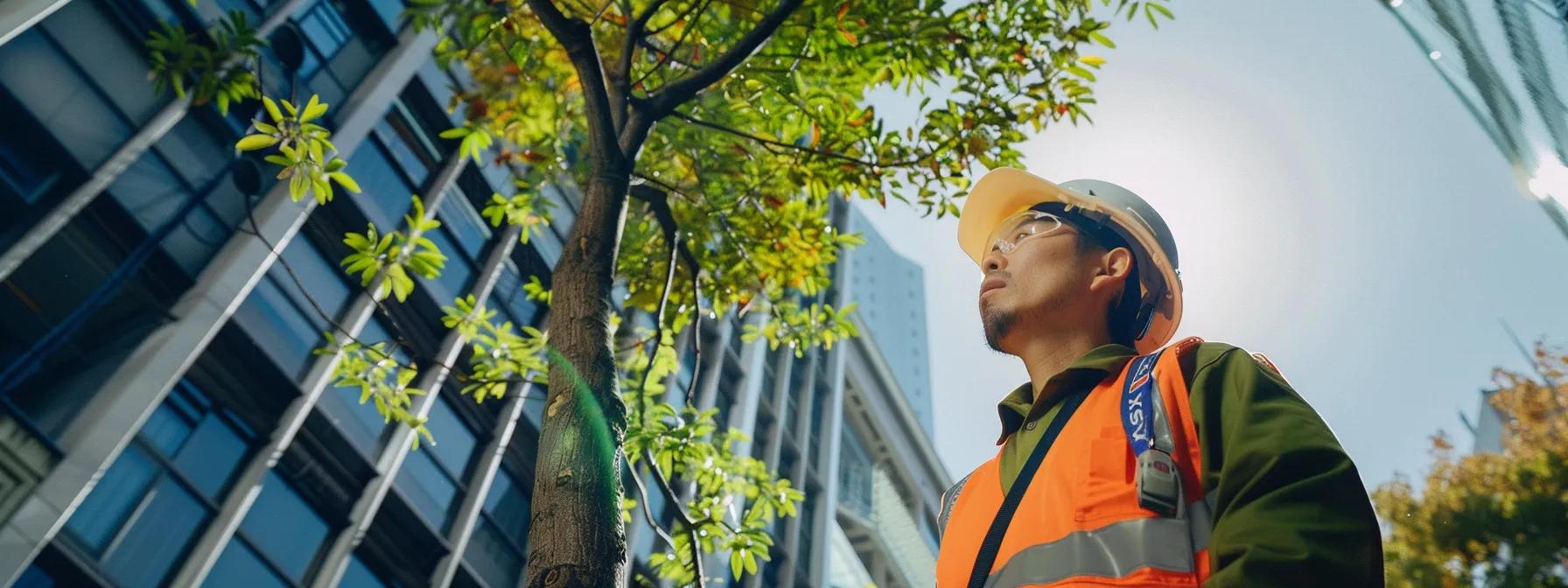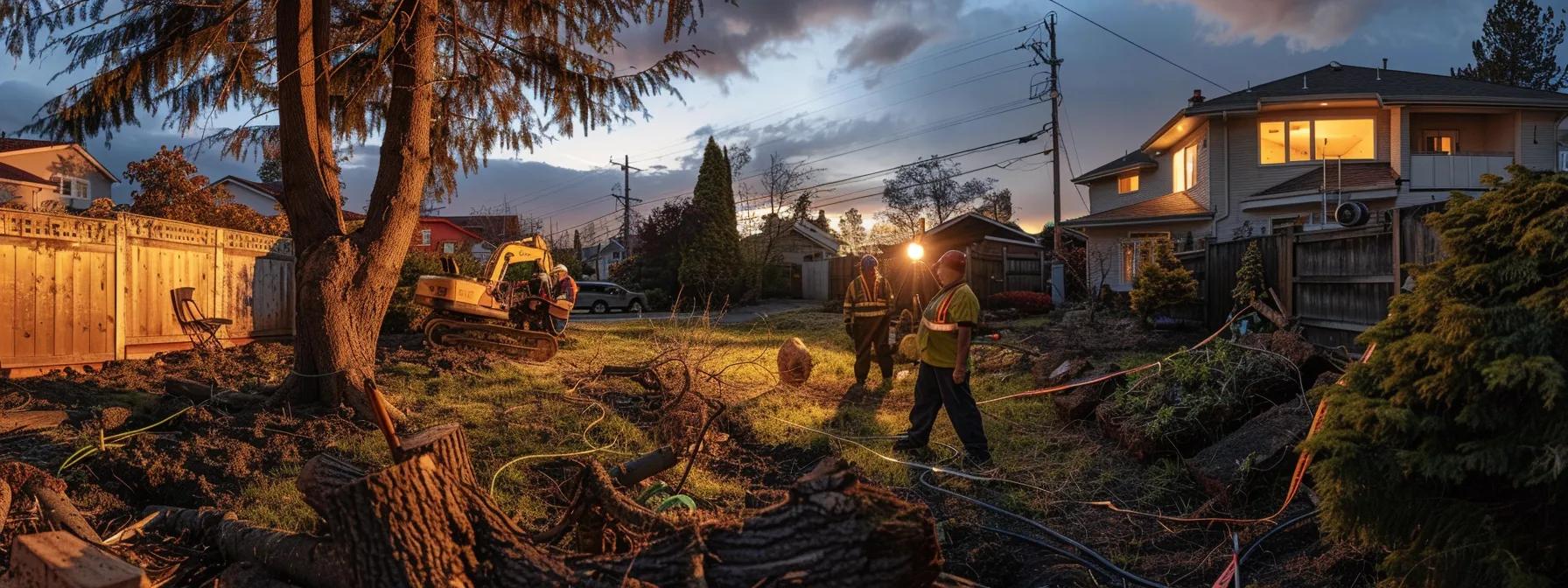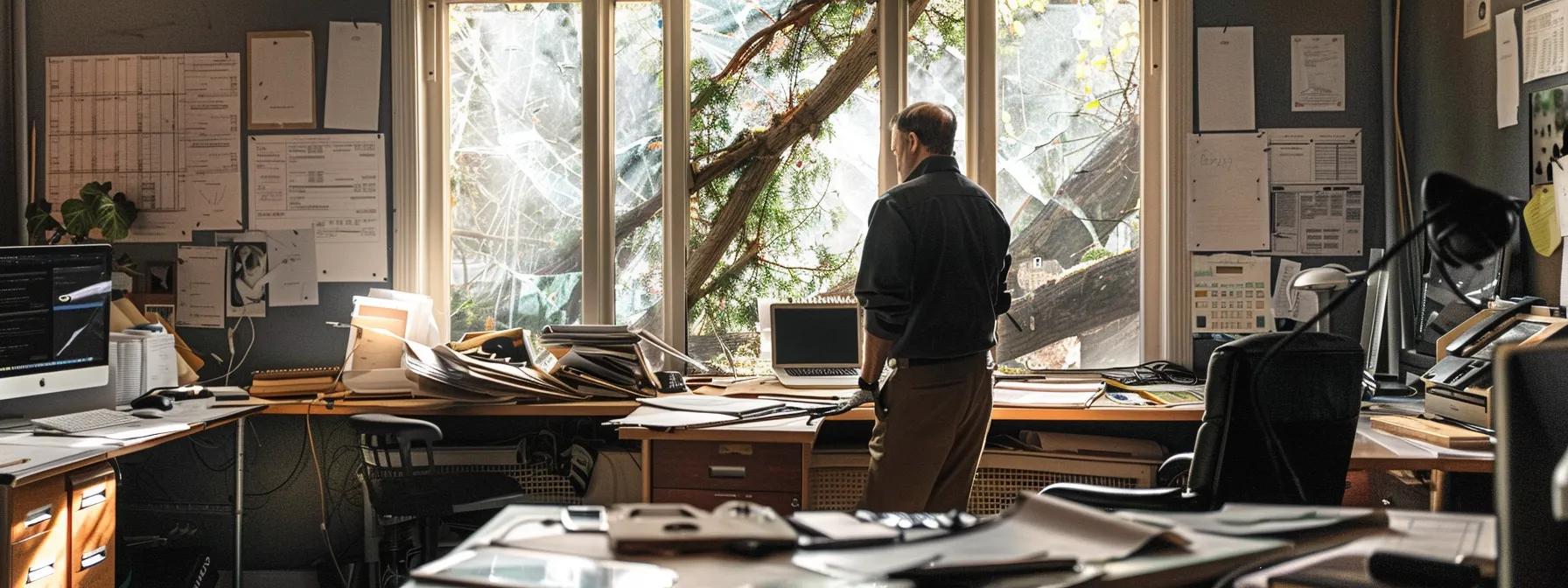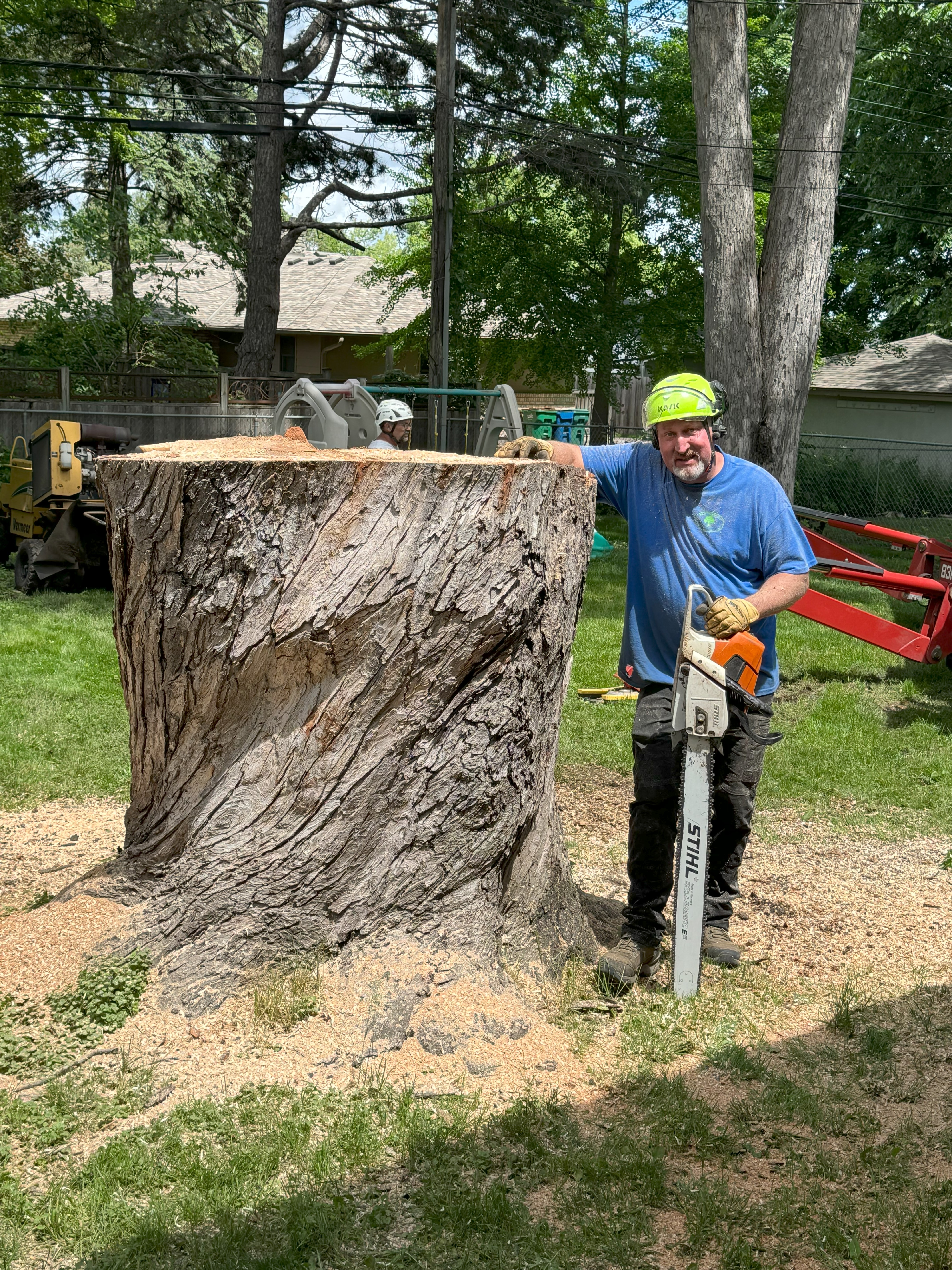
How to Secure Emergency Tree Removal Near You in Crisis Moments
Identify Local Emergency Tree Removal Services Quickly
When an emergency tree removal situation arises, it is critical to promptly identify trusted services nearby. Immediate action can reduce further damage, prevent injury, and alleviate hazards. The first step involves leveraging local search tools and online directories to locate qualified tree removal companies. Local listings often provide customer reviews, ratings, and photos of past work, which can offer insight into the company’s reliability and service quality. In today's digital age, many companies also offer live updates and maintain active social media profiles that showcase their emergency response times.
Search Online for Tree Removal Companies Near You
An effective strategy is to search the internet using location-based keywords. Using search phrases like “24 hour tree removal near me” or “emergency tree service in [city]” will produce a list of potential companies. This method enables users to compare different service providers and locate those that meet their urgent needs. Look for keywords such as “storm damage,” “emergency service,” and “ISA certified arborists” to filter out unreliable sources. Online platforms such as Google, Yelp, and Angi’s List also feature customer testimonials and ratings to help gauge the quality of services offered.
Check Customer Reviews and Ratings for Quality Assurance
Customer reviews serve as a practical indicator of a company’s reliability, safety record, and customer service quality. Detailed reviews often mention the effectiveness of emergency tree removal services during severe weather or how efficiently debris was removed after a tree fell. Reviews that include specific information such as response times, pricing transparency, and aftermath cleanup can help you make a confident decision. Look for consistent five-star reviews and testimonials that specifically mention emergency situations and the companies’ capacity to handle hazardous conditions.
Look for Companies With 24/7 Availability for Urgent Needs
Emergencies do not wait for business hours. It is essential to choose companies that offer 24/7 service. Many reputable firms advertise around-the-clock availability and have dedicated hotlines for urgent situations. Companies with guaranteed 24-hour response times typically have the resources and dedicated teams to handle high-risk removals, storm cleanups, and other urgent services. This ensures that in the midst of a crisis, like after a violent storm or severe wind damage, help is just a phone call away. Verifying 24/7 availability in an emergency can significantly reduce the overall risk of injury or further property damage.
Assess the Situation for Immediate Tree Removal

Before calling an arborist, it is crucial to assess the tree situation. Not every tree situation requires immediate removal, so performing a quick evaluation can help determine if the hazard warrants emergency action or can be resolved later with routine maintenance. Identifying the risk factors, such as the tree's location, its current posture, and any potential damage to nearby structures, is crucial. A thorough assessment ensures that the removal process addresses all hazards and minimizes risks during the intervention. In extreme scenarios, proper evaluation may even prevent injuries and save valuable property.
Ensure Your Safety Before Investigating the Tree Issue
When dealing with a fallen or damaged tree, safety is paramount. First, avoid approaching the tree if it appears unstable. Do not attempt to remove it yourself if you are not trained in tree removal techniques, as heavy branches or unstable structures could pose a danger. Instead, ensure that everyone in the vicinity is at a safe distance. If possible, secure the area by placing warning signs. In cases where the tree poses an immediate threat, contact local emergency services rather than attempting a DIY solution. Professional arborists have the necessary equipment and expertise to handle traumatic tree scenarios safely.
Identify if the Tree Poses Immediate Danger to Property
Assess whether the fallen or leaning tree is in contact with your home, a building, or power lines. Trees that threaten roofs, garages, fences, or other structures can lead to costly repairs and safety hazards. Immediate risks include potential roof collapse, injury from falling branches, and the possibility of fire hazards if the tree is near electrical sources. Analyzing the directional lean of the tree, the extent of visible damage, and any signs of decay can help determine its danger level. If the tree is precariously close to your property and shows signs of imminent collapse, you must arrange for emergency tree removal without delay.
Evaluate the Accessibility of the Fallen or Damaged Tree
The ease of accessing the tree is also an important factor. If the tree is blocking a crucial access point, road, or pathway, its removal becomes an emergency matter. Accessibility issues can complicate the removal process, especially if the tree is lodged in a difficult-to-reach area, such as near utility poles or in a tight urban setting like New York City. Evaluating the site not only involves measuring physical access but also assessing surrounding hazards. This ensures that the tree removal company can mobilize the necessary equipment, such as cranes or heavy-duty trucks, to safely extract the tree without causing further damage.
Take Photographs for Insurance and Documentation Purposes
Documenting the extent of damage is essential for insurance claims and future reference. Taking clear photographs from multiple angles provides evidence of the tree’s position, damage, and any related property impact. These images should include details of any structural damage to the building, vehicles, or landscape. Insurance companies typically require detailed documentation to verify claims and expedite reimbursement. Capture close-up shots and wide-angle views to fully illustrate the situation and make the claims process smoother later on.
Report the Hazard to Local Authorities if Necessary
Depending on the severity of the situation, local authorities or municipal services might need to be notified. This is often true if the fallen tree poses a significant public hazard on sidewalks or roads. Reporting allows local services to assist if the tree obstructs traffic or poses an imminent danger to passersby. Authorities can also document the incident, which can be beneficial for community safety records and in facilitating a rapid coordinated response with professional tree removal services.
Understand the Costs Involved in Emergency Tree Removal

Cost considerations are a critical component of emergency tree removal. The pricing of services can vary based on several factors, including tree size, complexity of removal, location, accessibility, and the urgency of the emergency. Homeowners and business owners should educate themselves on what constitutes a fair cost to avoid being overcharged in a crisis. It is useful to compare quotes from different service providers while considering the quality, reputation, and speed of service. Even in emergencies, understanding the financial implications can help mitigate unexpected expenses while ensuring effective resolution of the hazard.
Ask About Hidden Fees for Emergency Services
Not all tree removal companies are transparent with their pricing. Some businesses may include hidden fees for extra services such as cleanup, stump grinding, or hazardous tree removal. Always ask for a detailed quote that itemizes all associated charges. A reputable company should provide a clear breakdown of costs and explain any additional fees. Understanding the full scope of pricing ensures there are no surprises after the service is rendered. Research indicates that hidden fees can increase the cost of emergency tree removal by up to 20% in some cases, so clear communication is essential.
Inquire About Payment Options for Tree Removal Costs
During an emergency, liquidity may be a concern. Inquire if the tree removal service offers flexible payment options, including credit, installment plans, or third-party financing. Some companies might offer upfront discounts for immediate payment or provide emergency financial aid options. Flexible payment terms can alleviate the immediate financial burden, making it easier to manage costs without delaying the removal process. Transparent payment options are particularly important for large-scale removals or when additional services like land clearing are required. Ensuring clarity on payment terms helps homeowners plan the budget accordingly.
Discuss Insurance Coverage for Tree Removal Expenses
Tree removal may be partially or fully covered by homeowners’ insurance, depending on the cause of the emergency. It is important to understand the policy details regarding storm damage, fallen trees, and hazard removal. Contact your insurance provider to verify what expenses are reimbursable. In many cases, if the tree fell due to a natural disaster like severe weather or wind, the removal costs may be included. Discussing insurance coverage early on can help you negotiate with service providers and reduce out-of-pocket expenses. Additionally, professional tree services often work directly with insurance companies to streamline the claims process.
Compare Costs to Choose the Best Value Service
Comparing multiple quotes from different providers helps ensure you receive the best value for your money. While cost is a considerable factor, the quality of service, speed of response, and reputation should not be compromised. Prepare a list of potential companies with detailed quotes that include all fees, payment options, and any insurance assistance. Consider factors such as 24-hour availability, professional equipment, and cleanup quality. For example, peer-reviewed study analysis on emergency service pricing indicates that companies with transparent pricing models and outstanding customer reviews tend to deliver a 30% higher overall satisfaction rate compared to those with ambiguous fees. Taking the time to compare thoroughly can often lead to better cost savings in the long run.
Follow Up After Emergency Tree Removal

After the initial emergency removal, follow-up procedures are vital to ensure complete restoration of the property and resolve any remaining risks from debris, structural damage, or additional hazards. Effective follow-up not only helps secure your property from future incidents but also provides an opportunity to evaluate the overall service quality and offer valuable feedback for continuous improvement. Homeowners should take proactive steps to verify that all potential hazards have been cleared and that the cleanup process meets safety and aesthetic standards.
Inspect the Area for Any Remaining Hazards or Debris
Once the emergency tree removal is complete, conduct a thorough inspection of the area. Check for any remaining branches, tree chips, or other hazardous debris that could pose further risks. Ensure that all hazardous materials have been adequately removed from driveways, lawns, and walkways. In cases where debris remains, contact the service provider to schedule a cleanup or additional removal service. Conducting a detailed inspection helps confirm that your property is safe and ready for recovery. If there are overlooked dangers, such as unstable stumps or hidden branches, addressing them promptly can prevent accidents or injury.
Communicate With Your Tree Removal Service for Follow-Up
Maintaining open communication with the tree removal service provider is crucial after the work is completed. Ask for a follow-up inspection or evaluation by the service team to ensure all hazards have been addressed. If residual issues or minor concerns exist, a reputable company will offer follow-up services at a reasonable cost. This step is especially important for emergency jobs, where rapid decisions might lead to slight oversights. Follow-up communication can also help clarify warranty terms for the removal and cleanup work. Establishing a good follow-up protocol builds customer trust and ensures long-term satisfaction with the service rendered.
Discuss Stump Grinding Options Post-Removal
Often, after tree removal, the stump remains and can become a source of further issues, such as insect infestations or hindered landscaping. Investigate stump grinding options and include them in the follow-up agreement with your service provider. Stump grinding removes the base of the removed tree, reducing the likelihood of decay or hazardous sprouting in the future. Professional stump grinding is typically performed with specialized equipment and should leave the ground level, ready for restoration. Understanding the benefits and costs associated with stump grinding is an integral part of comprehensive property restoration.
Plan for Property Restoration if Damage Occurred
If the emergency tree removal has resulted in collateral damage—such as broken roof tiles, damaged fences, or disrupted landscaping—plan for subsequent restoration work. Documenting these damages with photographs is critical for insurance purposes and further repairs. Engage contractors or maintenance services familiar with emergency cleanups to restore the property to its pre-damage state. Integrating property restoration into your follow-up plan ensures that your home or business resumes normal operations with minimal interruption. Prioritizing restoration can also help maintain long-term property value and curb potential secondary damage.
Share Your Experience Online for Future Customers
After the work is completed and your property is safe, consider sharing your experience with the community by posting a review online. Positive feedback can help other customers in need identify reliable emergency tree removal services. Detailed testimonials that include aspects like response time, communication quality, and thorough cleanup can be invaluable. Online platforms not only inform future customers but also encourage service providers to maintain high standards. Sharing your experience online contributes to community knowledge and helps ensure that reputable companies stand out when emergencies arise.
Conclusion

In summary, securing emergency tree removal is a multi-step process that begins with promptly identifying and evaluating reliable local services. Homeowners must prioritize safety by assessing the hazard, documenting damage with photographs, and contacting professionals committed to rapid response. Cost transparency remains paramount; as illustrated, understanding hidden fees, payment options, and insurance coverage can significantly reduce out-of-pocket expenses during crises. Effective follow-up not only ensures that all risks have been mitigated but also paves the way for thorough property restoration after an emergency.
By applying these comprehensive steps, property owners can mitigate the risks associated with fallen or hazardous trees. The actionable guidelines provided—including evaluating service quality based on customer reviews and confirming 24/7 availability—serve as a practical blueprint for managing tree emergencies effectively. Ultimately, taking control of emergency tree removal means safeguarding your property, avoiding further structural issues, and building long-term resilience against future hazards.
Frequently Asked Questions
Q: How do I quickly find an emergency tree removal service near me?
A: Search online using terms like “24 hour tree removal” followed by your location. Check reviews, ratings, and verified service websites to ensure you choose a reputable company available 24/7 for urgent situations.
Q: What safety precautions should I take before a tree is removed?
A: Do not approach an unstable tree; ensure everyone stays clear, secure the area, and document hazards with photographs. Call professionals immediately rather than attempting DIY removal, as heavy branches may cause injuries.
Q: Are emergency tree removal services expensive?
A: Costs vary based on tree size, location, urgency, and additional services like cleanup or stump grinding. Request itemized quotes and discuss payment options. Confirm with your insurance provider if removal due to storm damage is covered.
Q: How long does the removal process take once the professionals arrive?
A: The process can vary from a couple of hours for smaller trees to several hours for larger, hazardous trees. Follow-up inspections and additional services like stump grinding may extend the overall completion time.
Q: Why is it important to document the damage with photographs?
A: Photographs provide essential evidence for insurance claims and help professionals assess the situation accurately. Detailed images assist in verifying the extent of damage and streamline the claims process with insurers.
Q: What should I do if residual hazards remain after removal?
A: Immediately contact the removal service for a follow-up inspection and additional cleanup if necessary. Residual hazards like remaining branches or unstable stumps should be addressed promptly to prevent future accidents.
Final Thoughts
New Horizons Tree Experts illustrate the importance of a swift, organized response during tree emergencies. Engaging 24/7 emergency services, understanding cost breakdowns, and performing thorough follow-ups contribute to safe outcomes. Homeowners who act decisively can mitigate further damage and ensure lasting property safety. For advice or expert services in crisis moments, trust professionals who value safety, quality, and customer care.
